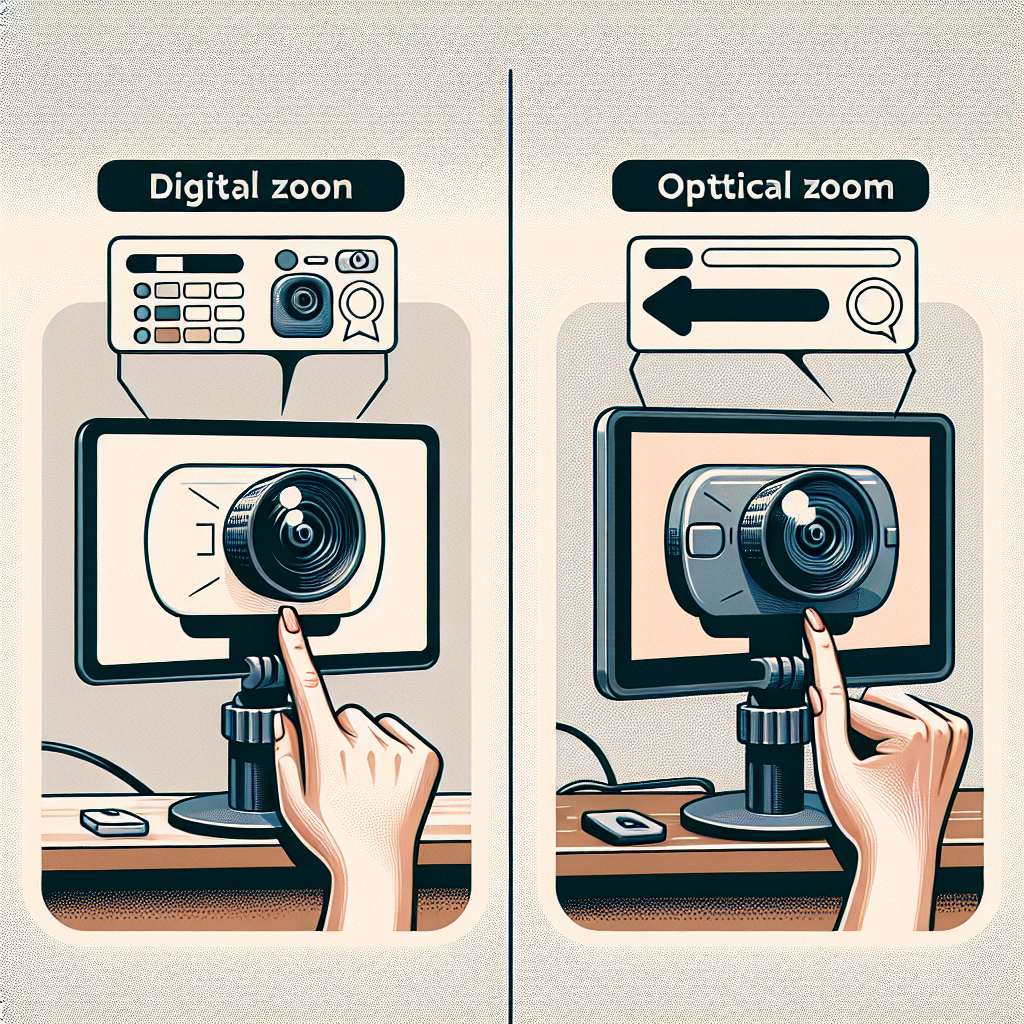Introduction
When selecting a webcam, one crucial feature to consider is its zooming capabilities. The terms “digital zoom” and “optical zoom” often come up, but what do they really mean? How do they affect the quality of your video calls, streaming, or recordings? Understanding the differences between digital and optical zoom can help you make an informed decision. This article delves deep into the mechanics, benefits, and limitations of both to help you choose the right webcam for your needs.
Zoom Types: An Overview
| Parameter | Digital Zoom | Optical Zoom |
|---|---|---|
| Mechanism | Software-based | Lens adjustment |
| Quality | Lossy magnification | Lossless magnification |
| Cost | Generally cheaper | Typically more expensive |
| Usage | Most consumer webcams | Professional-grade cameras |
| Flexibility | Limited by resolution | Limited by lens capabilities |
| Power Consumption | Varies but generally low | Higher, due to mechanical parts |
What is Digital Zoom?
Digital zoom is a software-based approximation that enlarges the image by cropping and scaling up the pixels from the central part of the image frame. While convenient and less expensive, digital zoom sacrifices image quality for magnification. This type of zoom is particularly prevalent in consumer webcams and smartphones, given its cost-effectiveness.
How Digital Zoom Works
Digital zoom operates by electronically stretching the image. Essentially, the software crops a section of the image and then enlarges it to fill the frame. Because this process relies on pixel interpolation, the overall image quality tends to decline as zoom levels increase. Higher zoom levels often result in a grainy or pixelated image.
Advantages of Digital Zoom
- Cost-effective implementation
- Simpler and more compact hardware
- Easy to use with software adjustments
Disadvantages of Digital Zoom
- Loss of image quality at higher zoom levels
- Grainy or pixelated appearance
- Increased digital noise
What is Optical Zoom?
Optical zoom relies on the physical movement of optics within the camera lens to magnify an image without compromising quality. By adjusting the lens elements, optical zoom can bring distant subjects closer with crystal-clear clarity. This type of zoom is common in professional-grade webcams and video cameras, where image quality is a top priority.
How Optical Zoom Works
Optical zoom physically changes the focal length of the lens system. When you zoom in, the lens elements adjust to magnify the subject optical elements are arranged to bring the scene closer without losing sharpness or resolution. This process maintains the original quality of the image, providing clear, detailed visuals at various zoom levels.
Advantages of Optical Zoom
- High-quality images at all zoom levels
- Sharper, more detailed visuals
- No loss of resolution
Disadvantages of Optical Zoom
- More expensive than digital zoom
- Larger and more complex hardware
- Higher power consumption due to mechanical components
Practical Applications
Understanding where each zoom type excels can help you choose the right webcam for your needs. Here are some practical applications to consider:
Digital Zoom
- Video Conferencing: For most day-to-day video calls, the convenience and cost-effectiveness of digital zoom make it the preferred choice for consumer webcams.
- Casual Streaming: Digital zoom is adequate for casual live streaming, where top-notch image quality is not crucial.
Optical Zoom
- Professional Streaming: Optical zoom provides the clarity and detail required for high-quality streaming, making it ideal for professional content creators.
- Photography and Videography: For capturing detailed and clear images or videos, optical zoom is the way to go, especially in professional settings.
Conclusion
Both digital and optical zooms have their unique advantages and limitations. While digital zoom offers a cost-effective and easy-to-use solution suitable for everyday use, optical zoom provides superior image quality essential for professional environments. By understanding these differences, you can better select a webcam that meets your specific needs, whether for work, streaming, or capturing high-quality content.

